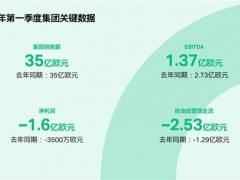????據今日油價1月26日消息稱,Rystad Energy對海恩斯和布恩的數據分析顯示,根據美國破產法第11章申請破產保護的北美勘探開發公司和油田服務公司的債務總額去年躍升至1020億美元,首次超過1000億美元大關。盡管申請破產保護的公司數量低于2016年經濟低迷時期,但108家申請破產保護的公司的平均債務幾乎是去年的兩倍,達到創紀錄的9.4億美元。
????去年可以說是北美油氣行業歷史上最具破壞性的一年。即便如此,Rystad Energy的分析結論是通過淘汰陷入困境的公司,并允許其健康的競爭對手繼續留在競爭場上,快速減少了市場參與者的數量。
????2020年最后三個月WTI價格的復蘇有助于減緩申請破產的數量。Rystad Energy預計,如果目前的WTI油價水平在2021年持續在53美元,申請數量將再次恢復正常,降至大流行前的水平,今年達到26起,2022年達到22起,低于2020年的46起,與2017-2018年的水平相近。
????Rystad Energy頁巖研究主管Artem Abramov表示:“從本質上說,幾乎所有公共的勘探和生產廠商現在都可以順利度過2021年,沒有重大的破產風險。然而,無論如何,我們應該記住,有一定數量的公司申請破產是正常的,應該被視為油氣業務不可分割的一部分。”
????去年,破產的勘探生產公司的債務總額比2016年減少約6億美元,為562億美元,而2016年為568億美元。然而,去年每家公司的平均債務達到了創紀錄的12億美元,這表明2017年至2020年期間,申報債務的平均規模大幅增加。
????去年勘探生產公司破產的一個重要原因是2019年開始的一種趨勢的結果,當時我們看到美國標準勘探生產業務模式發生巨大變化,可用資金減少。這促使一些公司在早期申請破產保護,在支撐資產負債表和獲得運營資金之間進行艱難的權衡。
????在油田服務方面,在2020年提交的62份破產案中,債務總額為450億美元,遠遠超過了2017年創下的350億美元的紀錄。這一數字的很大一部分來自于主要的海上鉆井公司,包括Diamond、Noble、Valaris和Seadrill Partners。以陸上為重點的服務提供商和供應商也做出了重大貢獻——在案件數量上略高于債務總額。
????積極的一面是,去年最后三個月,北美石油和天然氣公司申請破產保護活動已經平靜了不少。自 2020 年9月以來,OFS 和 E&P 的月度破產債務總額一直低于62億美元。
????市場基本面改善救了一大批企業。由于WTI的交易價格高于53美元/桶,且活動指標呈上升趨勢,他們可能會對自己有能力避免在2021年尋求破產保護感到更加放心。
????Abramov總結道:“隨著WTI 價格處在53美元,該行業正在恢復正常運營模式。同樣重要的是要記住,那些資產負債表最薄弱的公司已經申請了破產。如果有什么不同的話,市場基本面的改善將加速從2020年開始的重組過程,一些勘探開發公司可能會在2021年更快地恢復業務。”
????預計在2021-2022年申請破產保護的勘探開發公司的平均債務規模將大大低于2020年的平均水平。因此,申請破產保護的公司背后的債務總額預計將從 2020 年的 560 億美元下降至 2021-2022 年的每年100億美元—130 億美元—這清楚地表明,該行業正受益于市場的上升周期。
????曹海斌 摘譯自 今日油價
????原文如下:
????U.S. Oil Bankruptcies To Fall As Prices Stabilize
????The combined debt of North American E&P and oilfield service companies that filed for Chapter 11 bankruptcy protection last year jumped to $102 billion, surpassing the $100 billion mark for the first time, a Rystad Energy analysis of Haynes and Boone data shows. While the number of filings was lower than in the 2016 downturn, the average debt of the 108 companies that filed for Chapter 11 was almost twice as high at a record $940 million.
????Last year was arguably the most devastating year in history for the North American oil and gas industry. Even so, Rystad Energy’s analysis concludes that 2020’s round of Chapter 11 filings fast-tracked an overdue reduction in the number of market participants by removing troubled companies and allowing their healthier competitors to remain in the playing field.
????A recovery in WTI prices in the last three months of 2020 helped slow down the number of Chapter 11 filings. If the current oil price level of almost $53 WTI persists in 2021, Rystad Energy expects the filings count to normalize again and sink to pre-pandemic standards, reaching around 26 E&P cases this year and 22 in 2022, down from 46 filings in 2020 and similar to 2017–2018 levels.
????“In essence, nearly all public E&P producers are now positioned to navigate 2021 without significant bankruptcy risks. Nevertheless, regardless of the upcycle, we should keep in mind that a certain number of Chapter 11 E&P cases is normal and should be viewed as an integral part of the oil and gas business,“ says Artem Abramov, Head of Shale Research at Rystad Energy.
????Last year’s total Chapter 11 debt for E&P companies fell around $600 million short of the number recorded in 2016, at $56.2 billion vs $56.8 billion. However, the average debt per company reached a record high of $1.2 billion last year, indicating that the average size of the filings increased substantially between 2017 and 2020.
????A significant part of last year’s E&P Chapter 11 activity was the result of a trend that started in 2019, when we saw a massive change in the standard US E&P business model with reduced availability of capital. This contributed to early Chapter 11 filings by companies dealing with a challenging trade-off between shoring up their balance sheet and securing funds for operations.
????On the oilfield services side, total Chapter 11 debt in the 62 filings made in 2020 ended up at $45 billion, surpassing by a wide margin the previous record of $35 billion set in 2017. A large contribution to this number came from major offshore drillers, including Diamond, Noble, Valaris and Seadrill Partners. Onshore-focused service providers and suppliers also contributed significantly – somewhat more in the number of cases than in total debt.
????On a positive note, Chapter 11 activity for North American oil and gas players had already calmed down quite a bit in the final three months of last year. The total monthly Chapter 11 debt has remained below $6.2 billion since September 2020, for both OFS and E&Ps combined.
????A large number of companies were saved by the improvement in market fundamentals. They can feel even more comfortable about their ability to avoid seeking Chapter 11 protection in 2021, as WTI trades above $53 per barrel and activity metrics are trending upwards.
????“With WTI at $53, the industry is getting back to a normal operations mode. It is also important to keep in mind that the companies with the weakest balance sheets have already filed for bankruptcy. If anything, improved market fundamentals will accelerate the restructuring process that started in 2020 and some E&Ps might return to business faster in 2021,“ Abramov concludes.
????The average debt size of the E&P companies projected to file for bankruptcy protection in 2021–2022 will be dramatically lower than the average seen in 2020. Total debt behind Chapter 11 E&P filings is therefore expected to fall from $56 billion in 2020 to $10 billion–$13 billion per year in 2021–2022 – clear evidence that the industry is benefiting from an upcycle in the market.







